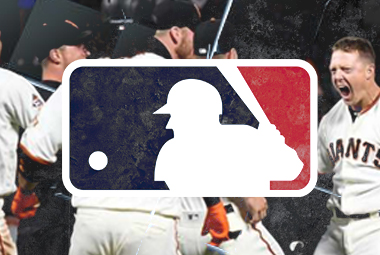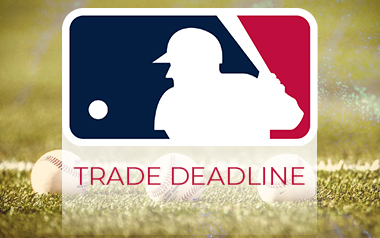On this page
The 2019 Major League Baseball Trade Deadline Specifics
Introduction
This time of year during the Major League Baseball season can be very confusing. Teams at the top of their division or organizations competing for playoff spots (divisional or wild card) are scrambling to add to or finalize their rosters going into the end of the season. They do this in order to be as competitive as possible in the big league pennant race as the postseason quickly approaches.
Teams in the opposite position are often the losing ball clubs of the season or small market teams that look to the future and want to dump big name players with large contracts to teams in the hunt looking to trade back young prospects. The young prospects hopefully can help these struggling baseball teams become better in the future.
This type of activity is quite common shortly after the All Star Game up to the end of July or the beginning of August. Due to the complexity of the MLB rules especially this year with certain rule changes I have provided the MLB trade deadline and trade waivers rules as stated by Major League Baseball below. They can be very confusing and convoluted when attempted to be explained so please read carefully:
2019 MLB Trade Deadline Official Rules
The Trade Deadline, which almost always falls at 4 p.m. ET on July 31, is the last point during the regular season at which players can be traded from one club to another.
Major League Baseball set the 2016 Trade Deadline for Monday, Aug. 1., in order to avoid having the deadline fall in the middle of the schedule of day games on Sunday, July 31. Pushing the deadline back one day to Aug. 1 -- when no games are scheduled
to begin before 7 p.m. ET -- prevented players from being traded in the midst of active games.

2019 Rule Change
Prior to 2019, July 31 was referred to as the non-waiver Trade Deadline, and players could be traded after that date if they first cleared revocable trade waivers.
The player's original club had three options when a waiver claim was placed: It could either work out a standard trade with the claiming club (the two sides had 48 hours to agree to a deal), allow the player -- and all money remaining on his contract -- to go to the claiming club with no return or pull the player back off waivers. A player who was pulled back off waivers could be placed on trade waivers a second time, but at that point the waiver request became irrevocable. If a player passed through waivers unclaimed, he could then be traded to any club, free of restriction (though all 40-man-roster players in the trade had to clear waivers before being dealt).
Although trades could be completed after Aug. 31 under the old rules, the last day in August was sometimes colloquially referred to as the "waiver Trade Deadline," as players acquired after that date were ineligible to be added to the postseason roster by their new teams.
As of 2019, the July 31 Trade Deadline is the only trade deadline. Players may still be placed and claimed on outright waivers after July 31, but trades will no longer be permitted after that date. With regards to newly acquired players, the Aug. 31 postseason roster deadline remains in effect.
Trade Deadline Example
Shortly before 4 p.m. ET on July 31, 2015, the Mets acquired outfielder Yoenis Cespedes from the Tigers in exchange for Minor League pitchers Michael Fulmer and Luis Cessa. Cespedes went on to bat .287/.337/.604 with 17 home runs in 57 games for the Mets, who ended up winning the National League East as well as the NL pennant.
Trade Waivers & Aug. 31 'Deadline'
Prior to 2019, players could still be traded following the July 31 Trade Deadline if they first cleared revocable trade waivers. Although trades could be completed after Aug. 31 under the old rules, the last day in August was sometimes colloquially referred to as the "waiver Trade Deadline," as players acquired after that date were ineligible to be added to the postseason roster by their new teams.
As of 2019, the July 31 Trade Deadline is the only trade deadline. Players may still be placed and claimed on outright waivers after July 31, but trades are no longer be permitted after that date. With regards to newly acquired players, the Aug. 31 postseason roster deadline remains in effect.
Under the old system, the player's original club had three options when a waiver claim was placed: It could either work out a standard trade with the claiming club (the two sides had 48 hours to agree to a deal), allow the player -- and all money remaining
on his contract -- to go to the claiming club with no return or pull the player back off waivers. A player who was pulled back off waivers could be placed on trade waivers a second time, but at that point the waiver request became irrevocable. If
a player passed through waivers unclaimed, he could then be traded to any club, free of restriction (though all 40-man-roster players in the trade had to clear waivers before being dealt).

Examples of Trade Waivers
The Chicago Cubs claimed Cole Hamels from the Philadelphia Phillies in August 2014, but the two sides weren't able to work out a trade in the allotted 48 hours and Hamels was pulled back by the Phillies.
The White Sox claimed Alex Rios off waivers from the Blue Jays in August 2009, and Toronto elected to allow Rios to go to the White Sox without compensation as a means of shedding the nearly $60 million remaining on his contract.
In August 2013, the Pittsburgh Pirates claimed Justin Morneau off waivers from the Minnesota Twins, and the two sides agreed to a trade that sent Morneau to Pittsburgh in exchange for outfielder Alex Presley and a player to be named later.
In one of the most famous August trades in MLB history, Justin Verlander was sent from the Tigers to the Astros for a trio of Minor Leaguers shortly before midnight on Aug. 31, 2017. Verlander had cleared revocable trade waivers earlier in the month, making him eligible to be dealt to any team.
Possible Buyers
- New York Yankees
- Chicago Cubs
- Boston Red Sox
- Los Angeles Dodgers
- Houston Astros
- St. Louis Cardinals
- Washington Nationals
- Minnesota Twins
Potential Sellers
- San Francisco Giants
- Miami Marlins
- Kansas City Royals
- Seattle Mariners
- Toronto Blue Jays
- Baltimore Orioles
- Detroit Tigers
- New York Mets
Key Position Players on the Market
- Yasiel Puig, Outfielder of the Cincinnati Reds
- Trey Mancini, First Baseman / Outfielder of the Baltimore Orioles
- Dee Gordon, Second Baseman of the Seattle Mariners
- Nick Castellanos, Third Baseman / Outfielder of the Detroit Tigers
- Hunter Renfroe, Outfielder of the San Diego Padres
- David Peralta, Outfielder of the Arizona Diamondbacks
- Adam Jones, Outfielder of the Arizona Diamondbacks
- Todd Frazier, Third Baseman of the New York Mets
- Kevin Pillar, Outfielder of the San Francisco Giants
- Pablo Sandoval, Third Baseman / First Baseman of the San Francisco Giants
- Justin Smoak, First Baseman of the Toronto Blue Jays
- Freddy Galvis, Shortstop / Second Baseman of the Toronto Blue Jays
- Eric Sogard, Second Baseman of the Toronto Blue Jays
- Corey Dickerson, Outfielder of the Pittsburgh Pirates
Key Pitchers on the Market
- Mike Minor, Starting Pitcher of the Texas Rangers
- Matthew Boyd, Starting Pitcher of the Detroit Tigers
- Marcus Stroman, Starting Pitcher of the Toronto Blue Jays
- Zack Greinke, Starting Pitcher of the Arizona Diamondbacks
- Madison Bumgarner, Starting Pitcher of the San Francisco Giants
- Zack Wheeler, Starting Pitcher of the New York Mets
- Kirby Yates, Relief Pitcher of the San Diego Padres
- Raisel Iglesias, Relief Pitcher of the Cincinnati Reds
- Will Smith, Relief Pitcher of the San Francisco Giants
Unpredictability
Baseball is a very unpredictable game, and it is extremely hard to tell what will happen over the remainder of July and August. Some teams that seemed to be out of the playoff race only a week or two ago have caught fire lately and are now fighting for
playoff positioning. Other teams that have been in the postseason hunt the whole first half of the 2019 MLB season have found themselves unable to win much lately and are falling far behind.

It will be interesting to see how these big time trades will change the landscape of the MLB over the rest of the highly anticipated season. Keep in mind these moves can heavily impact the betting on baseball games. If you are wagering on baseball games it is important to follow the standings as teams move up towards a playoff series or move down towards an offseason starting at the end of the regular season as well as the movement of big name players on the trading block. These trades can often provide the missing piece to puzzle that may just be winning the World Series.
Sources:
“10 things to watch in the two weeks prior to the MLB trade deadline”, Jeff Passan, espn.com, July 17, 2019.
“Trade Deadline”, mlb.com, July 17, 2019,
“Trade Waivers & Aug. 31 'Deadline'”, mlb.com, July 17, 2019.
“MLB trade deadline 2019: Date, rumors, top targets, new rules for Hot Stove season”, Dan Bernstein, sportingnews.com, July 17, 2019.
“Way-Too-Early 2019 MLB Trade Deadline Blockbuster Predictions”, Zachary D. Rymer, bleacherreport.com, January 29, 2019.
“10 biggest questions for the MLB trade deadline”, Bob Nightengale, usatoday.com, July 16, 2019.





